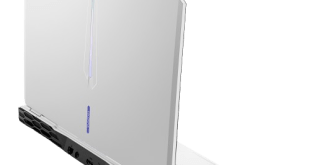Wind power is fast gaining fame as an alternative energy source. With the many wind power plants coming up, many people are now embracing wind power as a cost-effective energy source. Wind power uses a wind turbine, which employs different blades to generate power and convert the wind’s kinetic energy into a usable form. This can be in a wind farm or offshore setup, and the turbine assembly involves using different tools.
Offshore wind energy Vs. Onshore wind
Offshore wind energy is a renewable form of energy generated from wind at the sea and other water bodies. It uses turbines that take advantage of the waves, tides, currents when the wind reaches a constant speed due to the absence of barriers. To achieve this, IQIP technicians install mega structures on the sea bed, using the latest technological innovations.
The primary benefit of offshore wind energy is that it’s unlimited, doesn’t pollute the environment, and offers more wind resources than onshore wind power. Similarly, onshore wind energy uses turbines located on land and uses wind to generate power.
Onshore wind farms are located in wind places, and the wind turns the blades of the turbines. The turbines turn the wind energy into mechanical power, then to electricity using a generator. The good thing about onshore wind is that it leaves a relatively small carbon footprint. Again, the turbines are easy to install and employ less advanced equipment than in offshore wind.
What are the standard tools and equipment used in turbine installation& maintenance?
- Hydraulic torque wrenches
Hydraulic torque wrenches are handy devices during offshore wind energy turbine assembly. They feature calibration to measure the force applied to fasten and achieve the desired tightness or loosen bolts. They are available in different types, and square drives are pretty common. These work with hex sockets or low-profile sockets. The low profile types are useful for low clearance applications, for instance, when bolts are closely positioned to each other.
- Bolt tensioners
Bolt tensionsers work like torque wrenches; they clamp nuts and bolts together to secure loose joints. They stretch bolts against the flange, and the tensioning creates a more accurate load on bigger bolts.
How does the tensioner work? It’s snugly clamped to the bolts thread and forces against the plunge on the surface being bolted. This applies a consistent amount of stretch to the bolts ensures the right clamping force.
- Hydraulic pumps
Hydraulic torque wrenches and bolt tensioners use and hydraulic pump to drive them. Battery-powered pump models are common; they are highly portable and suit tight spaces. You can get the pumps in cordless, electric, and air-powered models.
- 4. Nut splitters
During turbine installation and maintenance, some nuts may be stubborn and difficult to loosen. You need a nut splitter to remove them. The common nut splitters are the hydraulic model; they are safer, and this avoids costly damages to other components.
Wrapping up
Turbine installation and maintenance employs different advanced tools and equipment. Whether installing onshore or offshore wind power, you should engage a reputed company with the right tools and expertise for the job. This ensures a successful project, saves time, and avoids damages to the turbines.
 Newspatrolling.com News cum Content Syndication Portal Online
Newspatrolling.com News cum Content Syndication Portal Online






